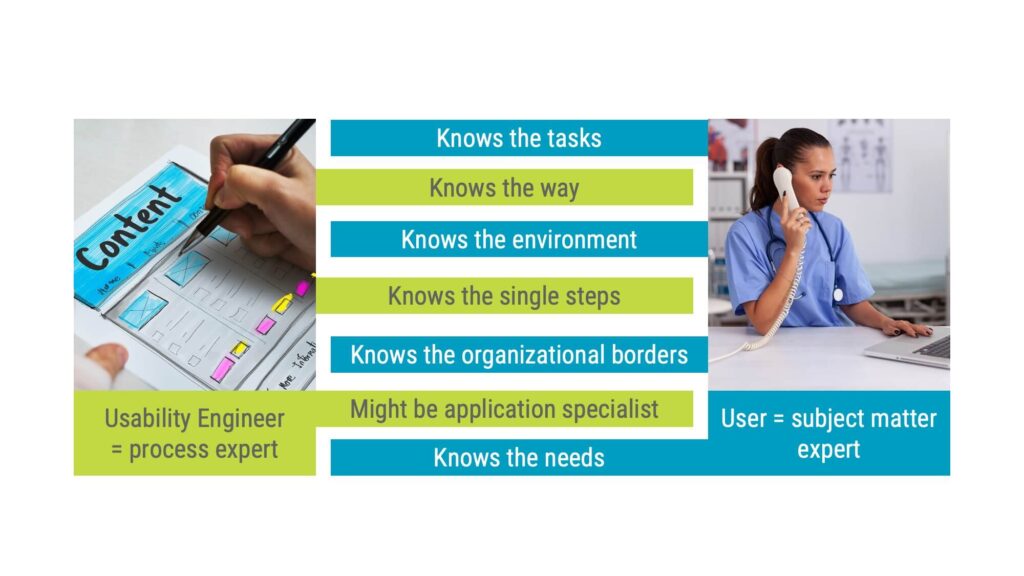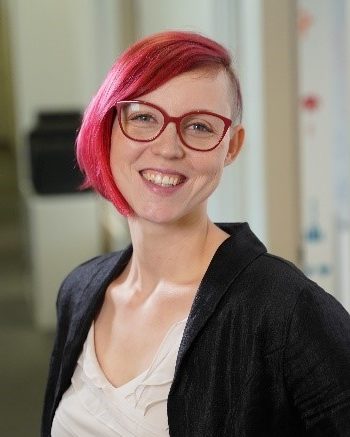
One of the most underestimated aspects of being a usability engineer is the mindset. To maybe no surprise, “mindset” is not mentioned in the IEC 62366-1 standard in usability engineering.
The following video, which is a part of our online Introduction to usability engineering and IEC 62366-1 course will introduce the topic.
Most jobs and positions have experts in its particular fields – architects, mathematicians, doctors, who all know what is best for the problems or situations they are tackling. With usability engineering, the experts can be called process experts, because a process expert is, simply said, someone who knows the way.
Consequently, the usability engineer does not have to be an expert on how a particular product is to be used. The usability engineer should be a process expert that knows the best steps to take and how to go from one step to the other. Usability engineers can be experts on specific matters, but they do not have to be. But for someone who only knows the process, one more thing needs to be added to be successful, and that is the user.
The users in usability engineering are the subject matter experts. This is because they know the tasks, the environment, the social rules, both explicit and implicit, but most importantly – they know what they need.

Users know the progress they are looking for. They know the goal and their destination, but what they do not know is the way. This is precisely why the usability engineer and the user make such a great team. Because one of them is the expert on the process, and one is the expert on providing input to the road taken.
In order to design a great device, both experts are needed; process expertise and subject matter expertise.
The task of the usability engineer is to build an environment of trust that enables the users to show what really matters to them. For that kind of environment to exist, there must be a respect towards the users, as well as sincere interest in what they have to say.
Perhaps one of the most important skills of the usability engineer is that they refrain from trying to explain their own potential solutions to the users, but spend at least 80% of the time listening carefully.
If there were hypothetical rules for user researchers and usability engineers, they could be summarised as:
Being respectful is simply listening to the user, without trying to convince them to think otherwise, and especially without arguing. This also includes being exceptionally polite.
The second rule, being interested, means being prepared to ask many questions designed in a way to help the usability engineer to understand the situation and the user’s point of view. The way the questions are worded is of great importance since they should be open and not guide them towards any particular answer or a conclusion.
Finally, being neutral is all about realising that what the usability engineer thinks and how they feel is simply not relevant and important. It means constantly remembering that it is all about the user and their needs, regardless of whether the engineer likes what they hear or not. They are not supposed to judge or assess the situation. This is because it is very easy to change the reaction of the interview partner, leading to false results.
To sum it up, great usability engineering includes two types of experts: the usability engineers themselves, and the users. When both parties stick to the rules and work towards the common goal, little could go wrong.
If you found this blog post useful and informative, check out our articles archive for more.
Get instant access to our online Usability Engineering and IEC 62366-1 course right here. In 8 hours, you can learn how to establish a pragmatic usability engineering process that enables regulatory clearance and great product design during this self-paced, interactive online course.
This course is taken by anyone working in product management, such as R&D and QA engineers, product and application specialists, and product owners. Or if you’re looking for a tailored training to align with your company’s specific needs – contact us for inhouse training options.

Dr. Michaela Kauer-Franz is a highly esteemed trainer, consultant, and entrepreneur in the medical device industry. She has vast hands-on experience, having developed, amongst other things, monitoring devices for ICU and NICUs, diabetes care products, and women’s health products.
Michaela Kauer-Franz has received numerous awards including the Red Dot Winner Interface Design Award and being nominated for the UX Design Award. She is a lecturer for the design of medical and critical user interfaces at the Technische Universität Darmstadt and part of the national standardization committees in Germany for Usability and User Experience.
Receive FREE templates and quarterly updates on upcoming courses that can help you in your career! Subscribe to our newsletter now.
When you submit this form, you will be sending personal information to medicaldevicehq.com. To comply with GDPR requirements, we need your consent to store and use the personal data you submit. Take a look at our Privacy policy for more details.
Dear users, the planned maintenance for this weekend is now complete!
You can now access the website and all functionalities are as usual. If you do experience any issues, please contact us at support@medicaldevicehq.com